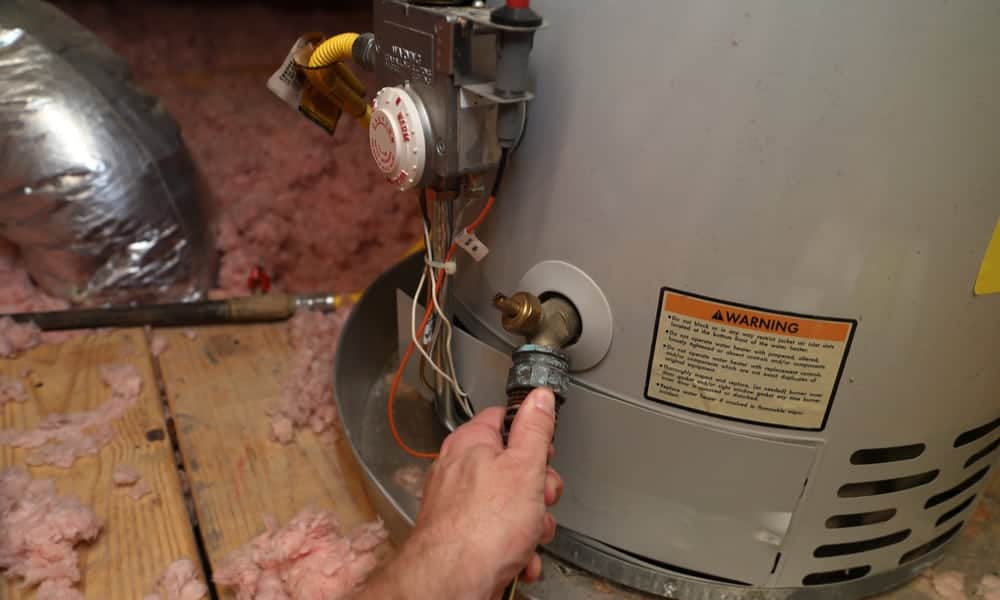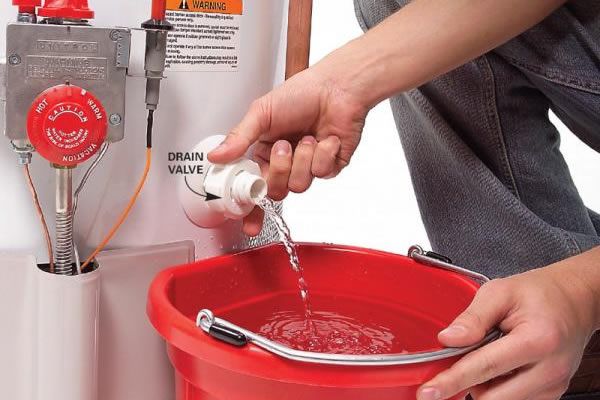I. Introduction

Explanation of the problem of having no hot water in the shower
Having no hot water in the shower is a common problem that can be quite frustrating, especially during the colder months. This issue can arise due to a variety of reasons such as Broken Heating Element, Thermostat Issues, or Water Heater Failure. It is crucial to identify the root cause to apply the appropriate solution.
Importance of fixing the issue
Fixing the lack of hot water is essential for maintaining a comfortable and hygienic living environment. It ensures the well-being of the residents and prevents potential Environmental Damage due to unresolved Water Leaks or Gas Leaks in the Plumbing System.
II. Identifying the Problem
Water Heater Issues
Check the Water Heater for any signs of Tank Leakage or Sediment Buildup. A Broken Gas Valve or Incorrect Water Heater Size can also lead to inadequate hot water supply. If you notice Water Heater Corrosion, it might be time for a replacement or a Plumbing Repair.
Thermostat Settings

Incorrect thermostat settings can result in cold showers. Ensure the thermostat is set to the right temperature, and there are no Thermostat Issues affecting the Water Temperature.
High Demand and Faucet Flow Rates
During times of High Demand, the availability of hot water can be limited. Additionally, High Faucet Flow Rates can deplete the hot water supply faster. Adjusting the flow rates and managing water usage can help in maintaining a steady supply of hot water.
II. Common Causes of No Hot Water in Shower
Understanding the common causes can help you identify and resolve the issue more efficiently. Let’s delve deeper into each cause and understand how they impact the availability of hot water in your shower.
Faulty water heater

A Faulty Water Heater is often the primary culprit behind the lack of hot water. Issues such as Broken Heating Element, Broken Gas Valve, or Water Heater Failure can disrupt the heating process, leaving you with cold water. Regular inspection and maintenance can help in identifying and resolving these issues promptly.
Sediment buildup in the water heater
Sediment Buildup in the Water Heater can reduce its efficiency and capacity. The accumulation of minerals and debris can lead to blockages, affecting the Water Flow and Water Pressure. Flushing the water heater regularly can prevent sediment buildup and ensure a steady supply of hot water.
Broken dip tube
A Broken Dip Tube can mix the cold and hot water inside the tank, causing a drop in the Water Temperature. Replacing the broken dip tube is essential to restore the proper functioning of the water heater.
Malfunctioning thermostat
Thermostat Issues can prevent the water heater from reaching the desired temperature. A Malfunctioning Thermostat can either overheat the water or not heat it at all. Regular calibration and replacement of faulty thermostats can help in maintaining the correct water temperature.
Pilot light issues
For gas water heaters, issues with the pilot light can disrupt the heating process. A faulty thermocouple or a dirty pilot light orifice can lead to Pilot Light Issues. Cleaning the orifice and replacing the thermocouple can resolve these issues.
III. Practical Solutions
Once you have identified the cause, it’s time to roll up your sleeves and start the repair process. Whether it’s using a Pipe Wrench to tighten Slip Nuts or applying Duct Tape to seal a leak, addressing the issue promptly can prevent further damage to your Plumbing System.
Plumbing Repair
If the issue is beyond a simple fix, seeking professional Plumbing Repair services is crucial. A licensed plumber can conduct a thorough inspection and repair of your plumbing system, addressing issues such as Water Line Blockage, Mineral Buildup, and Clogged Faucet Cartridge.
Regular Maintenance
To avoid future inconveniences, schedule regular maintenance of your water heater and plumbing system. This includes checking for Tank Leakage, Sediment Buildup, and ensuring the Water Supply is free from Cross Connections.
Environmental Consideration
While resolving the issue, consider using Biodegradable Drain Cleaner instead of Chemical Drain Cleaners to prevent Environmental Damage. Opt for eco-friendly solutions like Baking Soda and Vinegar Solution to clear Drain Clogs.
III. How to Fix No Hot Water in Shower
Fixing no hot water in the shower can be a rewarding experience, allowing you to apply practical solutions to restore comfort to your daily routine. Here’s a step-by-step guide and some tips to help you troubleshoot and fix the common causes mentioned above.
Step-by-step guide to fixing the common causes listed above

- Identify the Root Cause:
Start by identifying whether the issue is with the Water Heater, Plumbing System, or other components. Check for Tank Leakage, Broken Dip Tube, and Thermostat Issues. - Inspect the Water Heater:
Examine the Water Heater for any signs of Sediment Buildup or Water Heater Corrosion. If you find any Faulty Heating Elements, consider Plumbing Repair. - Clear Blockages:
Use a Plunger or Sink Auger to clear any blockages in the Water Drainage system. A Biodegradable Drain Cleaner can also be effective in resolving Drain Clogs. - Adjust Thermostat Settings:
Ensure the thermostat is set to the right temperature to avoid Water Temperature issues. If the thermostat is malfunctioning, it may need replacement. - Resolve High Demand Issues:
Manage water usage during peak times and adjust Faucet Flow rates to maintain a steady supply of hot water and avoid issues due to High Demand. - Check Gas Supply:
For gas water heaters, ensure there is no Gas Leak and the gas supply is stable. If the pilot light is out, relight it following the manufacturer’s instructions. - Regular Maintenance:
Schedule regular maintenance to prevent Environmental Damage and ensure the longevity of the Plumbing System and Water Heater.
Tips for troubleshooting and identifying the root cause of the problem
- Use Your Senses:
Listen for unusual noises, look for visible leaks, and smell for gas to identify any abnormalities in the Plumbing System or Water Heater. - Consult the Manual:
Refer to the manufacturer’s manual for specific troubleshooting steps and maintenance guidelines for your Water Heater and plumbing components. - Be Mindful of Safety:
When dealing with Gas Supply, Boiling Water, and Chemical Drain Cleaners, ensure to take necessary precautions to avoid accidents and injuries. - Seek Professional Help:
If the issue persists or is beyond your expertise, don’t hesitate to contact a licensed plumber for a thorough inspection and repair.
IV. Prevention Tips
Preventing the issue of no hot water in the shower is as crucial as knowing how to fix it. By following these preventive measures, you can ensure a consistent supply of hot water and avoid unnecessary hassles.
Regular maintenance of the water heater
Regular maintenance of the Water Heater is crucial to prevent Sediment Buildup, Tank Leakage, and Broken Heating Element. It helps in identifying potential issues early and ensures the efficient functioning of the water heater.
Flushing the water heater regularly

Flushing the Water Heater regularly can prevent the accumulation of minerals and debris, avoiding Water Heater Corrosion and ensuring optimal Water Flow and Water Pressure. It is a simple yet effective way to maintain the longevity of the water heater.
Checking the thermostat settings
Regularly checking and adjusting the Thermostat Settings can help in avoiding Thermostat Issues and maintaining the desired Water Temperature. It ensures that you are not caught off guard with a sudden surge of cold water during your shower.
Inspecting the pilot light
For those with gas water heaters, inspecting the pilot light is essential. A malfunctioning pilot light can disrupt the heating process, leading to a lack of hot water. Regular inspection can help in identifying and resolving Pilot Light Issues promptly.
V. Conclusion
Recap of the importance of fixing the issue
Having no hot water in the shower is more than just an inconvenience; it can impact your daily routine and well-being. Addressing the issue promptly by identifying the root cause, whether it’s a Broken Dip Tube, High Faucet Flow Rates, or Incorrect Water Heater Size, is crucial. Regular maintenance, flushing the water heater, and checking the thermostat settings can prevent such issues and ensure a comfortable shower experience.
Encouragement to seek professional help if needed
If the problem persists or if you are unsure of the repairs, do not hesitate to seek Professional Plumbing Repair. A licensed plumber can provide a thorough inspection, identify the root cause, and offer the most effective solutions. Remember, a well-maintained Plumbing System is key to a happy and healthy home!
FAQ
In this section, we will address some of the most frequently asked questions related to no hot water in the shower. These answers will provide you with additional insights and practical information to deal with and prevent this common issue.
How long does it take for a water heater to heat up?
How long does it take for a water heater to heat up?
The time it takes for a Water Heater to heat up depends on its type and capacity. Typically, a standard tank water heater takes about 30 to 40 minutes to heat the water to the desired temperature, while tankless water heaters can provide hot water almost instantly. However, if your water heater is taking longer than usual, it might be due to Sediment Buildup or a Broken Heating Element.
Can sediment buildup be prevented?
Yes, Sediment Buildup in the water heater can be prevented by regular maintenance and flushing of the water heater. Installing a water softener can also reduce the buildup of minerals inside the tank. Regularly draining a few gallons of water from the tank can help in removing any sediment and maintaining the efficiency of the Water Heater.
How often should a water heater be flushed?
It is generally recommended to flush your Water Heater at least once a year. However, if you live in an area with hard water, you might need to do it more frequently to prevent Mineral Buildup and Tank Leakage. Regular flushing helps in maintaining the optimal functioning of the water heater and extends its lifespan.
What should I do if I smell gas near my water heater?
If you smell gas near your water heater, it is crucial to act immediately as it indicates a potential Gas Leak. Turn off the gas supply, ventilate the area, avoid using electrical switches, and evacuate the premises. Contact your gas company or a licensed plumber immediately to address the issue. Remember, safety should always be your top priority.
How much does it cost to replace a water heater?
The cost to replace a Water Heater can vary widely depending on the type, capacity, and installation charges. On average, the replacement cost, including installation, can range from $800 to $2000 for a standard tank water heater, and $3000 to $4500 for a tankless model. It is advisable to get quotes from multiple service providers and choose the one that offers the best value for your investment.

